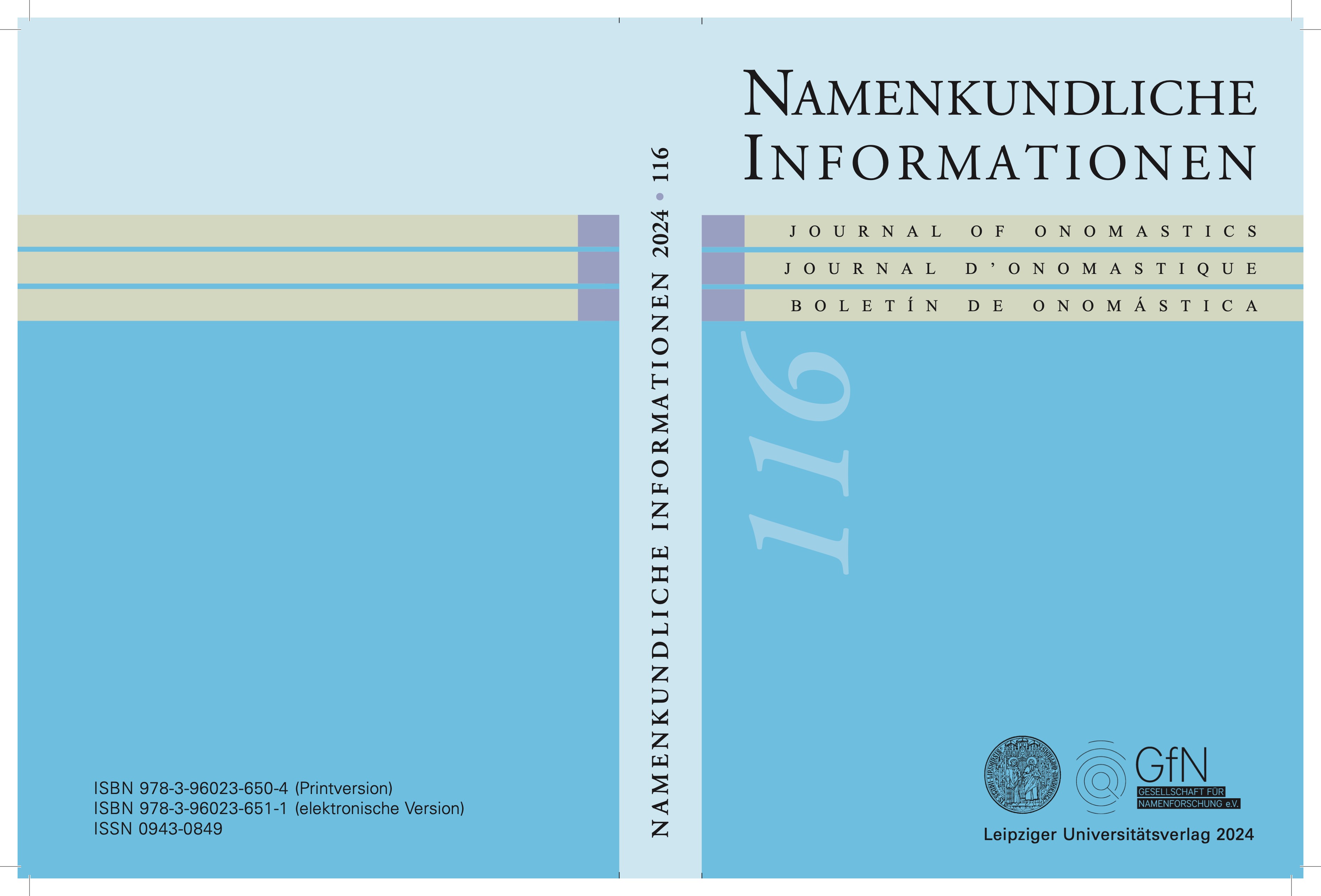Palatalisierung von CA nördlich des Brenners?
DOI:
https://doi.org/10.58938/ni761Abstract
Ludwig Staub (1854) introduced the assumption that the Western Romance palatalization of CA is also attested in some Germanized toponyms north of the Brenner Pass. Karl Finsterwalder initially took up this idea, and his successors have since then retained it. The assumption is based on double etymologies, especially the explanation of some toponyms coming from Latin caverna. Similarly, the name of the mountain meadow Schifernei, together with Tschifernelle in the Silvretta, is explained like this, but there is also a mountain farm, Tschübernäll, in the canton of Schwyz, and a Romance expression tschifernällä in the German dialect of the canton of Uri for a board used in a game. This expression is a more probable explanation for Tschübernäll and Tschifernella, and possibly also for Schifernei, albeit with another suffix. It is likely ultimately derived from medieval Latin civeria for a means of transporting goods, especially a basket carried on one’s shoulders. Schiferoi, down in the lower Inn valley, may also be derived from this expression. Falschwern (Gschnitztal) for a steep ravine is almost certainly a *val cibāria like Val Tschafera in Grisons. Five toponyms in the neighbouring Stubai valley are no more reliable as evidence for a palatalized CA. The farm name Tschafalles is better explained through Latin iugālis instead of caballus (Steub 1854), Tschafatten perhaps by Ladin ciavāt, Gschnals certainly by Latin vicinālis. Kuh- and Stiergschwätz is probably an entirely German nickname. The farm name Tschafernack and the valley Tschaforn in South Tyrol also have nothing to do with caverna: The first has counterparts in Germany, especially a vineyard estate, ze Shavernakken, already being attested around 1200. The second, 1343 Schufaren, is better explained by Latin iugārius.
Downloads
Veröffentlicht
Ausgabe
Rubrik
Lizenz
Copyright (c) 2024 Diether Schürr

Dieses Werk steht unter der Lizenz Creative Commons Namensnennung 4.0 International.
Es findet keine exklusive Übertragung von Verwertungsrechten (Copyright Transfer) an die Zeitschrift statt. Die Autor/innen stimmen bei Manuskripteinreichung der Veröffentlichung unter der Lizenz Creative Commons Attribution 4.0 International zu.


